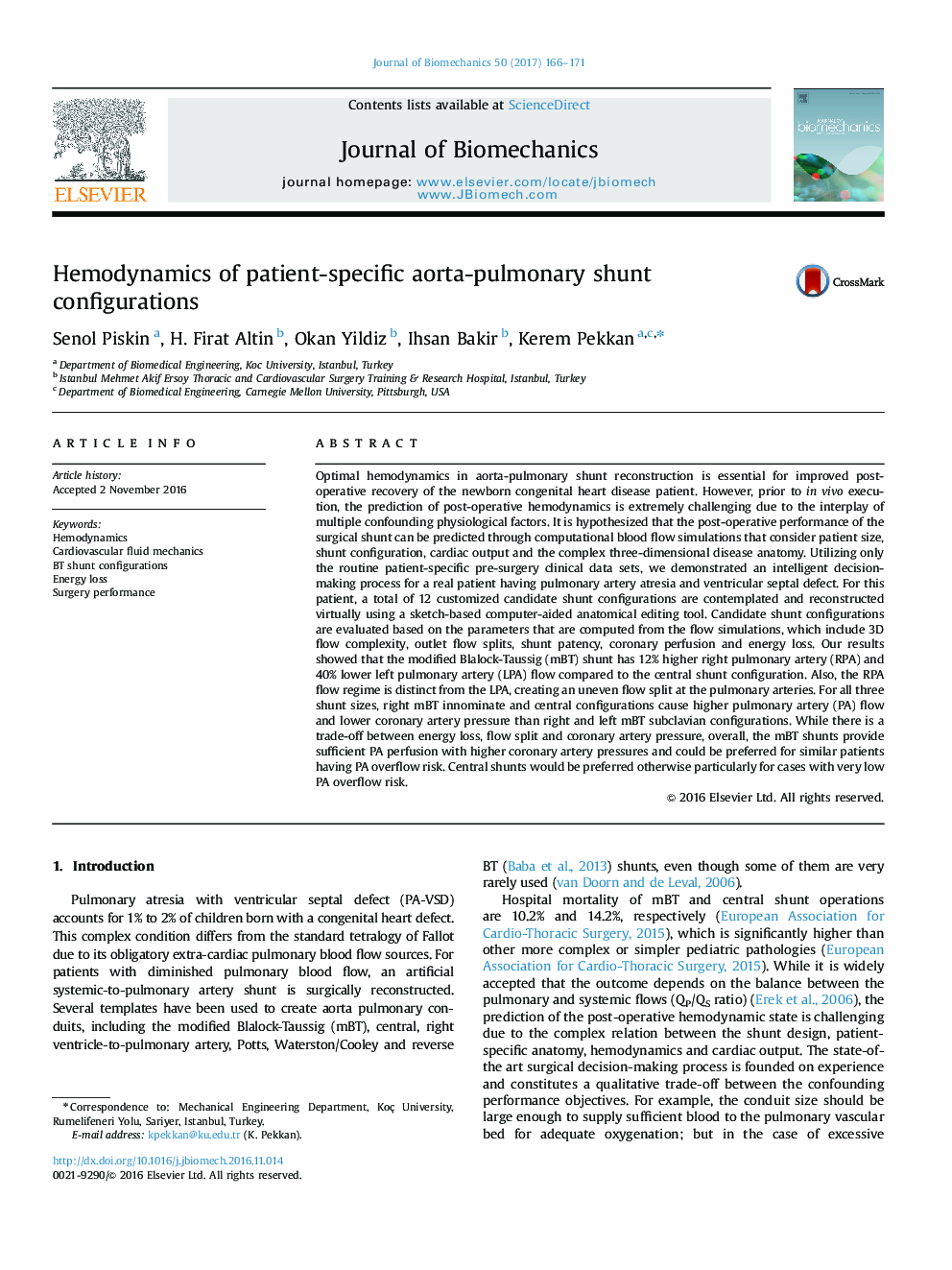| کد مقاله | کد نشریه | سال انتشار | مقاله انگلیسی | نسخه تمام متن |
|---|---|---|---|---|
| 5032145 | 1471114 | 2017 | 6 صفحه PDF | دانلود رایگان |
Optimal hemodynamics in aorta-pulmonary shunt reconstruction is essential for improved post-operative recovery of the newborn congenital heart disease patient. However, prior to in vivo execution, the prediction of post-operative hemodynamics is extremely challenging due to the interplay of multiple confounding physiological factors. It is hypothesized that the post-operative performance of the surgical shunt can be predicted through computational blood flow simulations that consider patient size, shunt configuration, cardiac output and the complex three-dimensional disease anatomy. Utilizing only the routine patient-specific pre-surgery clinical data sets, we demonstrated an intelligent decision-making process for a real patient having pulmonary artery atresia and ventricular septal defect. For this patient, a total of 12 customized candidate shunt configurations are contemplated and reconstructed virtually using a sketch-based computer-aided anatomical editing tool. Candidate shunt configurations are evaluated based on the parameters that are computed from the flow simulations, which include 3D flow complexity, outlet flow splits, shunt patency, coronary perfusion and energy loss. Our results showed that the modified Blalock-Taussig (mBT) shunt has 12% higher right pulmonary artery (RPA) and 40% lower left pulmonary artery (LPA) flow compared to the central shunt configuration. Also, the RPA flow regime is distinct from the LPA, creating an uneven flow split at the pulmonary arteries. For all three shunt sizes, right mBT innominate and central configurations cause higher pulmonary artery (PA) flow and lower coronary artery pressure than right and left mBT subclavian configurations. While there is a trade-off between energy loss, flow split and coronary artery pressure, overall, the mBT shunts provide sufficient PA perfusion with higher coronary artery pressures and could be preferred for similar patients having PA overflow risk. Central shunts would be preferred otherwise particularly for cases with very low PA overflow risk.
Journal: Journal of Biomechanics - Volume 50, 4 January 2017, Pages 166-171
